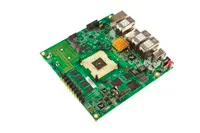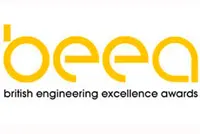Electronics News
Archive : 10 September 2015 год
 MIT researchers have unveiled what they claim is the first fundamentally new approach to cache coherence in more than three decades. The development – called Tardis – is said to respond to the need for a more efficient way of maintaining cache coherence in many core devices.
MIT researchers have unveiled what they claim is the first fundamentally new approach to cache coherence in more than three decades. The development – called Tardis – is said to respond to the need for a more efficient way of maintaining cache coherence in many core devices.
In order to know which cores have copies of which data, many core devices have a directory in shared cache memory and this, says the team, takes up a large amount of space. As an example, the researchers suggest the directory in a 64 core chip might need 12% of the shared memory.
By increasing the memory requirement as a log of the number of cores, rather than in direct proportion, more efficient use is made of the available memory. So, in a 128 core chip, the MIT technique would require only one-third as much memory, while a 256 core chip would need only 20%.
The research, conducted by Xiangyao Yu and Professor Srini Devadas, has concluded the physical-time order of distributed computations doesn’t matter, so long as their logical-time order is preserved. So core A can keep working on a piece of data that core B has since overwritten, provided the rest of the system treats core A’s work as having preceded core B’s.
In the Tardis system, each core has a counter and each data item in memory has an associated counter. When a program launches, all counters are set to zero. When a core reads a piece of data, it takes out a ‘lease’ on it, incrementing the data item’s counter to a particular number, say x. As long as the core’s internal counter doesn’t exceed that number, its copy of the data is valid.
When a core needs to overwrite data, it takes ‘ownership’ of it. Other cores can continue working on locally stored copies of the data, but if they want to extend their ‘leases’, they have to coordinate with the data item’s ‘owner’.
If a core needs to overwrite data, it takes ownership and sets its counter to x+1, which shows it as operating at a later logical time than the other cores. This idea of leaping forward in time is what gives the system its name.
In addition to saving space in memory, Tardis is said to eliminate the need to broadcast invalidation messages to all cores sharing a data item. In massively multicore chips, Yu says, this could also lead to performance improvements.
Author
Graham Pitcher
Source: www.newelectronics.co.uk
 Freescale semiconductor has released the QorlQ LS1043A residential gateway, claimed to be the industry’s first 10Gbit/s Internet and 10Gbit/s Wi-Fi enabled home gateway solution aimed at driving multi-gigabit broadband access toward mainstream adoption.
Freescale semiconductor has released the QorlQ LS1043A residential gateway, claimed to be the industry’s first 10Gbit/s Internet and 10Gbit/s Wi-Fi enabled home gateway solution aimed at driving multi-gigabit broadband access toward mainstream adoption.
The QorlQ LS1043A was developed in collaboration with Quantenna Communications and features a quad-core processor based on 64-bit ARMv8 technology, together with Quantenna’s QSR10G 10G Wave 3 802.11ac Wi-Fi product family.
The device is said to deliver 1.6GHz of performance and dissipating typical power down to 5W, the LS1043A is suited for broadband gateway applications including next-generation edge networking equipment such as Fibre and xDSL residential gateways, branch routers, security appliances and SND/NFV edge platforms.
“Delivering on the promise of Quantenna’s 10G Wave 3 Wi-Fi product family demands a level of packet processing performance that was previously the exclusive domain of high-end enterprise networking equipment, yet today Freescale is uniquely positioned to bring power-efficient, multi-gigabit performance to the home,” said Nikolay Guenov, director of Product Management for Freescale’s Digital Networking group.
The device is also said to feature virtualisation hardware, supports over-the-air software updates with Freescale’s thrust architecture, and offloads latency sensitive applications for optimised local performance with classification and traffic management hardware.
Freescale offers a full-featured Linux OpenWRT-based residential gateway Application Solution Kit, which implements low-level routing and security acceleration functions, and a CodeWarrior toolchain.
Author
Tom Austin-Morgan
Source: www.newelectronics.co.uk
 Haptic technology developer Ultrahaptics is working with Jaguar Land Rover in the investigation of a mid air touch system for its Predictive Infotainment Screen.
Haptic technology developer Ultrahaptics is working with Jaguar Land Rover in the investigation of a mid air touch system for its Predictive Infotainment Screen.
The work is intended to help drivers keep their eyes on the road, rather than on the technology in their cars. Using the Ultrahaptics solution, the driver’s hand can be located and tracked as it moves across a field of interaction. The user can feel virtual objects and control switches and buttons, giving the ability to control them in mid-air and receive feedback to confirm their action.
Steve Cliffe, Ultrahaptics’ CEO, said: “We are enormously proud to have been chosen to support this safety critical technology programme. Our innovation will be truly disruptive to the way we interface with the technology within our vehicles.”
Author
Graham Pitcher
Source: www.newelectronics.co.uk
 Findlay Media is delighted to announce the shortlist for this year’s British Engineering Excellence Awards (BEEAs).
Findlay Media is delighted to announce the shortlist for this year’s British Engineering Excellence Awards (BEEAs).
“Once again the calibre of entries for this year’s awards has been exceptionally high and the judges have found it difficult to agree on the shortlist,” said Phil Mayo, chairman of the judging panel and MD of Premier EDA Solutions.“The strength of the shortlisted entries demonstrates all that is great about British design engineering. From innovative Start-Ups and clever Young Design Engineers to pioneering Materials Applications and world beating Design Teams, the entries continue to inspire and prove that the UK leads the way on the global design engineering stage.”
The companies shortlisted in each BEEAs category are:
Consultancy of the Year
3form Design
Argon Design
ByteSnap Design
Drive System Design
Kinneir Dufort
Product Partners
Design Engineer of the Year
Mike Lawton - Oxford Space
Paul Pomfret - Xtrac
Richard Poulton - Navtech Radar
Bob Stevens - Ansible
Paul Thomas - Cupris
Martin Wallace - Steeper
Design Team of the Year
Drallim Industries
Electronic Temperature Instruments (ETI)
Industrial Design Consultancy (IDC) & Quantel
Navtech RadarLtd
Optical Metrology Services (OMS)
Xtrac Ltd
Materials Application of the Year
3form Design - Novarix IC-eye
Diamond Hard Surfaces Admtm - Adamant amorphous diamond material
Nylacast - Pipe in Pipe Spacers
Surrey NanoSystems - Vantablack
T-T Pumps - Ready Sump
New Product (Electronic) of the Year
Argon Design - Argon Streams
FTDI Chip - FT600 Series
Laird - BT900
London Underground - Train Monitoring System
REFL - Ultra-Low Latency HD Video Lens Distortion Correction
TDK-Lambda UK - ZMS100-100W AC-DC Power Supply
New Product (Mechanical) of the Year
2-DTech - Advanced Graphene Process
Birley Manufacturing - Universally Accessible Toilet Module
Bollard Load Testing - Bollard Load Test Equipment
Delphi Powertrain Systems - F2
RDM Group - Driverless Pod
Steeper - bebionic Small
Small Company of the Year
Blu Wireless Technology
GWR Fasteners Ltd
LG Motion Ltd
Magna Parva Ltd
Physical Digital Ltd
Wideblue Ltd
Start Up of the Year
Cubik Innovation
Cupris Health
Oxford Space Systems
Young Designer of the Year
Jenna Allen - A-one+ Integrated Highway Services
James Chambers - Greentree
James Melrose - Welwyn Components/TT Electronics
Cat Silva - Rotite Technologies
Dan Stamp - Kliklok International
The winners will be announced at a gala lunch at the Hurlingham Club, London, on 29 October.
Tables for the lunch can be booked online at: http://www.beeas.co.uk/book-a-table/
Author
Tom Austin-Morgan
Source: www.newelectronics.co.uk
![]() According to the latest report by IHS Technology the overall power semiconductor market, including both power discretes and power modules, is predicted to grow 5% in 2015 to reach $17billion. In 2014, year-over-year power discrete revenue grew 5% and power module revenue grew 12%.
According to the latest report by IHS Technology the overall power semiconductor market, including both power discretes and power modules, is predicted to grow 5% in 2015 to reach $17billion. In 2014, year-over-year power discrete revenue grew 5% and power module revenue grew 12%.
Also, according to the report, the global power module market is projected to comprise 30% of the power semiconductor market by 2019, growing at twice the rate of power discretes, from 2014 to 2019.
“OEMs will continue to want modular power solutions, which can be integrated into various subsystems and used in many different devices,” said Richard Eden, senior analyst of the semiconductor value chain for IHS Technology. “Power modules are widely found in inverters for wind converters, photovoltaic solar energy systems and other renewable energy applications. They are also found in industrial motor drives and hybrid and electric vehicles.”
“Standardised discrete power semiconductors have become commoditised with little differentiation,” said Victoria Fodale, senior analyst of the semiconductor value chain for IHS Technology. “OEMs and ODMs typically multisource discrete products through distributors.”
Infineon continued to be the largest supplier for the global power semiconductor market in 2014, with an estimated market share of 13%. Mitsubishi ranked second, at 7%.STMicrosystems moved up to the third market position, displacing Toshiba, with an estimated market share of 6%.
With the acquisition of International Rectifier by Infineon, the market landscape for power semiconductors is said to be changing. The merged companies held almost 27% of the power transistor market in 2014. The transistor product category includes bipolar transistors, MOSFETs, and IGBT products, accounting for about two thirds of the total discrete power semiconductor market.
Mitsubishi Electric was the largest supplier for power modules in 2014, although the company’s estimated share of the market remained at 24% for 2013 and 2014. Infineon maintained the second-ranked position at 20%. The top four power module suppliers – Mitsubishi, Infineon, Semikron and Fuji Electric – accounted for 65 percent of the global power module market in 2014.
Author
Tom Austin-Morgan
Source: www.newelectronics.co.uk
 HyperCat has announced that it is joining the Industrial Internet Consortium (IIC) to help tackle two key IoT challenges: firstly, how to find relevant and trustworthy data from connected ‘things’; And secondly, how to make it easier for those things to talk to each other.
HyperCat has announced that it is joining the Industrial Internet Consortium (IIC) to help tackle two key IoT challenges: firstly, how to find relevant and trustworthy data from connected ‘things’; And secondly, how to make it easier for those things to talk to each other.
HyperCat is focused on making data from a connected thing or device discoverable, searchable and addressable. The HyperCat standard is intentionally brief and will be accessible to all, hoping to encourage widescale adoption. It is funded by the UK government, through Innovate UK and is backed by over 500 international businesses.
“The greatest value from the IoT will come when we combine the intelligence from multiple devices to create new and improved services,” said Justin Anderson, HyperCat lead and CEO of Flexeye. “The HyperCat standard, together with the work of the IIC and the other major IoT collaborative bodies, will go a long way towards delivering the required interoperability.”
The IIC was founded in March 2014 to bring together the organisations and technologies necessary to accelerate growth of the Industrial Internet by identifying, assembling and promoting best practices. Membership includes small and large technology innovators, vertical market leaders, researchers, universities and governments.
Stephen Mellor, CTO of the IIC said: “I am delighted to welcome HyperCat as the latest member of IIC and I look forward to seeing the standard in action in collaboration with our testbed sponsors.”
Pic: Justin Anderson, HyperCat
Author
Tom Austin-Morgan
Source: www.newelectronics.co.uk
 Researchers from the University of Southampton have identified easy-to-use techniques to configure IoT objects, to make them more secure, helping protect them from online attacks.
Researchers from the University of Southampton have identified easy-to-use techniques to configure IoT objects, to make them more secure, helping protect them from online attacks.
The increased connectivity of the IoT brings additional risk. Setting personalised and strong passwords when connecting new devices to the Internet can mitigate such risks. However, many IoT devices have limited interfaces: just a few buttons, if any at all, and light indicators, making it challenging for users to configure them. If secure configuration becomes complicated, users may choose easier, less secure options that leave their devices vulnerable.
Southampton researchers compared four interaction techniques for the configuration of IoT devices, looking for methods that allowed security, but were quick and easy to use. All four techniques used smartphone touchscreens to let users enter secure passwords.
Two of the techniques used a more ‘traditional’ approach by connecting the smartphone and the IoT device through a USB or audio cable, via the smartphone’s headphone socket. The third technique used a ‘Wi-Fi-only’ approach, where the smartphone creates a temporary Wi-Fi network to which the IoT device automatically connects before being redirected to the correct permanent network. The final option was the smartphone and the IoT device exchanging information through light: the smartphone's screen flashed black and white to mean binary 'zero' or 'one'; the IoT device read this light/binary pattern to learn the password from the smartphone.
The results found that two of the techniques were noticeably more usable than the others - the audio cable and the Wi-Fi-only interactions.
Study co-author Dr Enrico Costanza, from the University’s Agents, Interaction and Complexity Research Group, said: “We believe that not enough attention has been placed on how to make the IoT easy to use and to configure, so we hope that our results will motivate others in researching this topic.”
Pic: Sensor being programmed by the flashing screen of a mobile phone
Author
Tom Austin-Morgan
Source: www.newelectronics.co.uk

